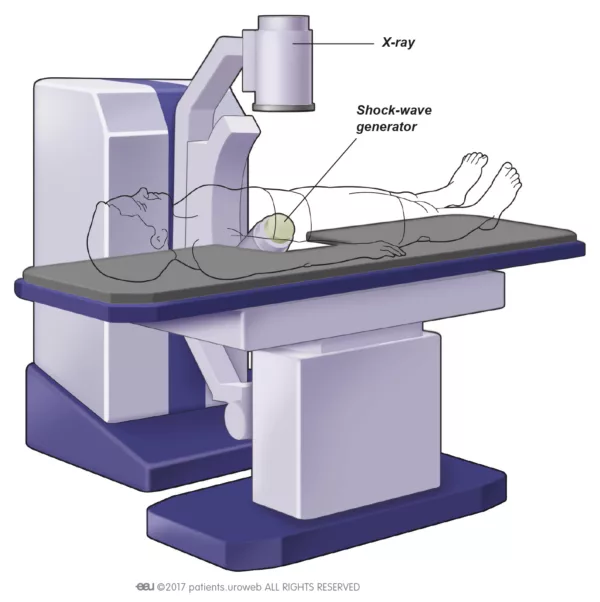Related topics for further reading
How it works
This treatment uses sound waves to break a kidney stone into tiny pieces, which you can then pass naturally when you urinate.
The procedure takes about an hour and can cause some pain, so you’ll be given pain medication to help. You may also be given sedation or pain relief to help you relax. If the stone is large, you may need a few sessions to completely break it up.
Shock-wave lithotripsy may not be right for you if you:
- Are pregnant
- Are at high risk of heavy bleeding
- Have an infection
- Have high blood pressure that isn't well controlled
- Carry excess weight, which may make it hard for the sound waves to reach the stone
- Have an aneurysm (an aneurysm is a weak spot in a blood vessel that can swell and may burst)
- Have a stone that’s difficult to reach or if urine can’t flow properly due to a blockage below the stone
- Have very hard kidney stones
Your doctor will help you understand if this procedure is right for you. They will explain the possible risks and benefits of shock-wave lithotripsy based on your personal health.
After the procedure, you may have some side effects. These can include:
- Pain
- Blood in your urine (haematuria)
- A blockage in the kidney caused by stone fragments moving through the ureter
- Kidney injury
- Heart-related symptoms
- Injury to nearby organs
If you notice anything unusual or feel worried, don’t hesitate to reach out to your healthcare team. They are there to support you and help you feel better.
This animation shows what happens during the shock-wave lithotripsy procedure.
This chapter contains general information about kidney stones. It is not a substitute for professional medical advice or treatment. Always consult your doctor or healthcare provider for guidance on your individual medical situation.
Last updated: July 2025
Reviewed by:
- Dr. Amelia Pietropaolo (YAU Working Group on Endourology & Urolithiasis)
- Dr. Riccardo Lombardo (Guideline Panel on Urinary Incontinence)



